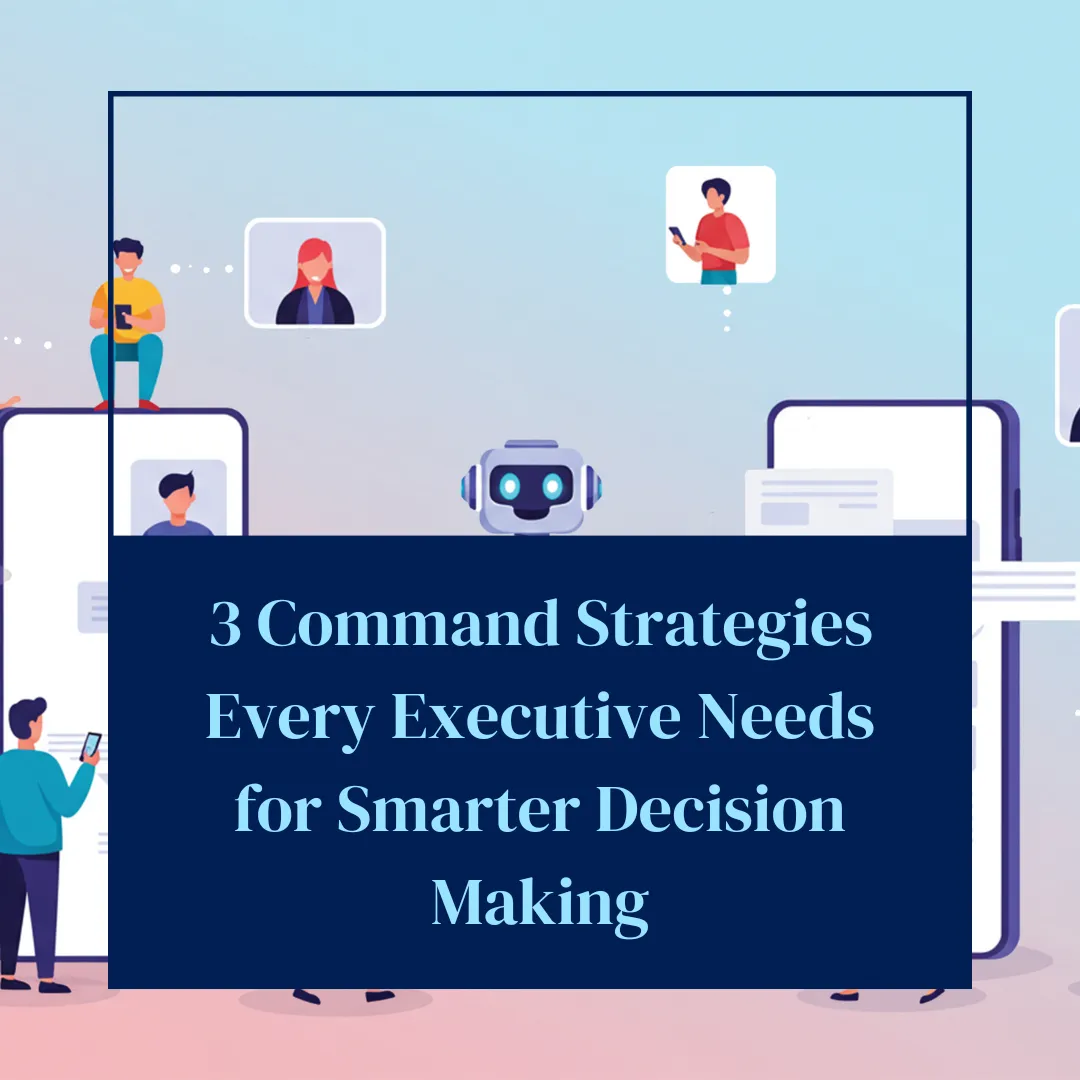
3 Command Strategies Every Executive Needs for Smarter Decision Making
Executives rarely face simple choices. Each decision is a fork in the road that can influence revenue, culture, market position, or long-term growth. The challenge is not just making a choice but making the right choice with enough agility to adjust when conditions change.
Today’s business landscape demands more than instinct. Leaders must harness data, empower teams, and structure decision-making frameworks that are resilient to disruption. Increasingly, AI and automation provide leverage in each of these areas, making executive decisions both sharper and faster.

1. Leverage Data-Driven Insights
Why it matters: Data grounds decisions in reality. It transforms abstract risks and opportunities into measurable signals. Executives who rely on data are less likely to fall prey to biases or incomplete perspectives.
How to apply:
Implement real-time dashboards to track performance metrics across sales, operations, and customer behavior.
Use predictive analytics to identify trends and anticipate market shifts.
Apply risk modeling tools to evaluate downside exposure before committing resources.
Where AI helps:
Predictive forecasting: AI can project sales, supply chain constraints, or customer churn with greater accuracy than manual analysis.
Sentiment analysis: Natural language processing tools analyze customer feedback, reviews, and even employee communications to detect underlying trends.
Anomaly detection: Machine learning can flag irregularities in data streams—such as sudden cost spikes or demand drops—before they escalate.
2. Foster Collaborative Environments
Why it matters: Executive decision-making is stronger when multiple perspectives are included. Collaboration not only surfaces better ideas but also builds buy-in and trust across teams.
How to apply:
Promote open forums or structured workshops where diverse voices can contribute.
Build cross-functional decision committees to balance perspectives from finance, operations, and marketing.
Encourage transparent communication around the rationale for decisions.
Where AI helps:
AI meeting assistants: Tools like Otter.ai or Microsoft Copilot automatically summarize discussions, highlight action items, and track decision points.
Knowledge bases: AI-powered platforms organize past project learnings and institutional knowledge, making insights easier to surface during decision cycles.
Workflow automation: Automated task assignments and progress tracking ensure follow-through after decisions are made.
3. Implement Flexible Decision Frameworks
Why it matters: Markets, technologies, and customer expectations change faster than ever. Rigid decision-making processes can leave organizations exposed. Flexibility ensures leaders can adapt without sacrificing long-term goals.
How to apply:
Establish decision criteria that can be revisited as conditions evolve.
Use scenario planning to anticipate multiple possible futures.
Empower teams with autonomy to adjust tactics while staying aligned with strategy.
Where AI helps:
Scenario simulation: AI can generate and test multiple market scenarios, helping leaders stress-test strategies before deploying them.
Automated monitoring: Systems track key metrics in real time and alert decision-makers to shifts requiring attention.
Adaptive playbooks: AI-driven frameworks suggest pivots based on external signals, such as competitor moves or regulatory changes.
Bringing It Together
Strong executive decision-making combines clarity, collaboration, and adaptability. Data-driven insights provide the foundation. Collaborative environments enrich decisions with multiple viewpoints. Flexible frameworks ensure strategies remain viable in the face of uncertainty. AI and automation are accelerants across all three areas, transforming these strategies from theory into practice.
The modern executive’s toolkit is not just sharper intuition—it is systems that process complexity faster than any one individual can. Leaders who invest in these capabilities will find themselves not just reacting to change but steering confidently through it.
Key Questions for Reflection
Are your decisions currently guided more by intuition or by data? How could AI strengthen the data side of the equation?
What tools are you using to capture and integrate diverse perspectives into decision-making?
Do your current frameworks allow for pivots when conditions shift, or are they overly rigid?
By addressing these questions, executives can begin to operationalize the three strategies—and turn decision-making from a gamble into a disciplined, adaptable process.
Subscribe to our blog for insights, news and offers.
